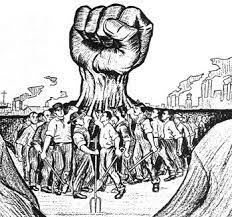A trade union is an organisation or an association of employees made up of workers whose principal purpose and aim is to protect and advance the interests of its members in the workplace, while negotiating relations between employees and employers.
The first ever employee strike in Kenya occurred in 1939, at the African Railway Apprentice, that brought the port of Mombasa to a standstill. This prompted the colonial management of the port, which had tried to reduce staff wages, to find a way of regulating and addressing employees grievances, giving rise to trade unionism.
In Kenya, Mzee Jomo Kenyatta, Bildad Kaggia, Jesse Kariuki, Fred Kubai, Joseph Kang’ethe and Makhan Singh are just but a few notable names in the history of trade unions recorded. The late Tom Mboya was the first secretary general for the first trade union The Kenya Federation of Labor, which later changed to Kenya Federation of Registered Trade Union and in 1965, the present day Central Organization of Trade Unions (COTU) the umbrella body for trade unions, with Kenya National Union of Teachers (KNUT) as the biggest trade union in the country.
As part of the labor relations rights, workers have the right to form, join and leave a trade union, allowing them to come together and form an association to fight for their rights. Employers cannot bar their employees from trade unionism, but instead, they can also form an association to voice their interests, like the Federation of Kenyan Employers (FKE).
A Trade union is formed to advocate for specific needs or interests for workers of a particular profession. In case there is an existing union representing the same interests, then no other trade union can be registered. The Registrar of trade unions, under the ministry of labor, receives documents of the union’s proposed constitution, an application form that is signed by a substantial number of members to be, its verified leadership, the intended secretary general, chairperson and at least two more members who make the registry official.
Where a trade union is not registered but its intended leadership is convinced there is a gap in the specific profession it seeks to protect, an appeal to have it registered can be made at the Employment and Labor Relations Court.
Other conditions for the formation of a trade union include satisfaction of the following requirements as published by office of the registrar of trade unions:
Complience with the Labor Relations Act, 2007.
Adoption of a constitution that complies with the requirements of the labor Relation Act, 2007 and requirements set out in the first schedule.
A physical office and postal addresses within Kenya.
Confirmation that no other trade union is already registered that sufficiently represents the whole or substantial proportion of interests, in respect to the applicants registration.
That only members in the sector’s specified in the union’s constitution, qualify for membership of the trade union.
That the name is not the same as that of an existing trade union.
The decision to register the trade union was made at a meeting attended by at least fifty members of that trade union.
The trade union is independent of direct or indirect control of any employer or employers association. and
That the trade union’s sole purpose is to pursue the activities of a trade union.
Once the registrar is satisfied with the documentation and composition of the Trade Union, a recognition agreement becomes alive. This is an official undertaking between a union and employer, allowing the former to represent interests of unionisable employees.


